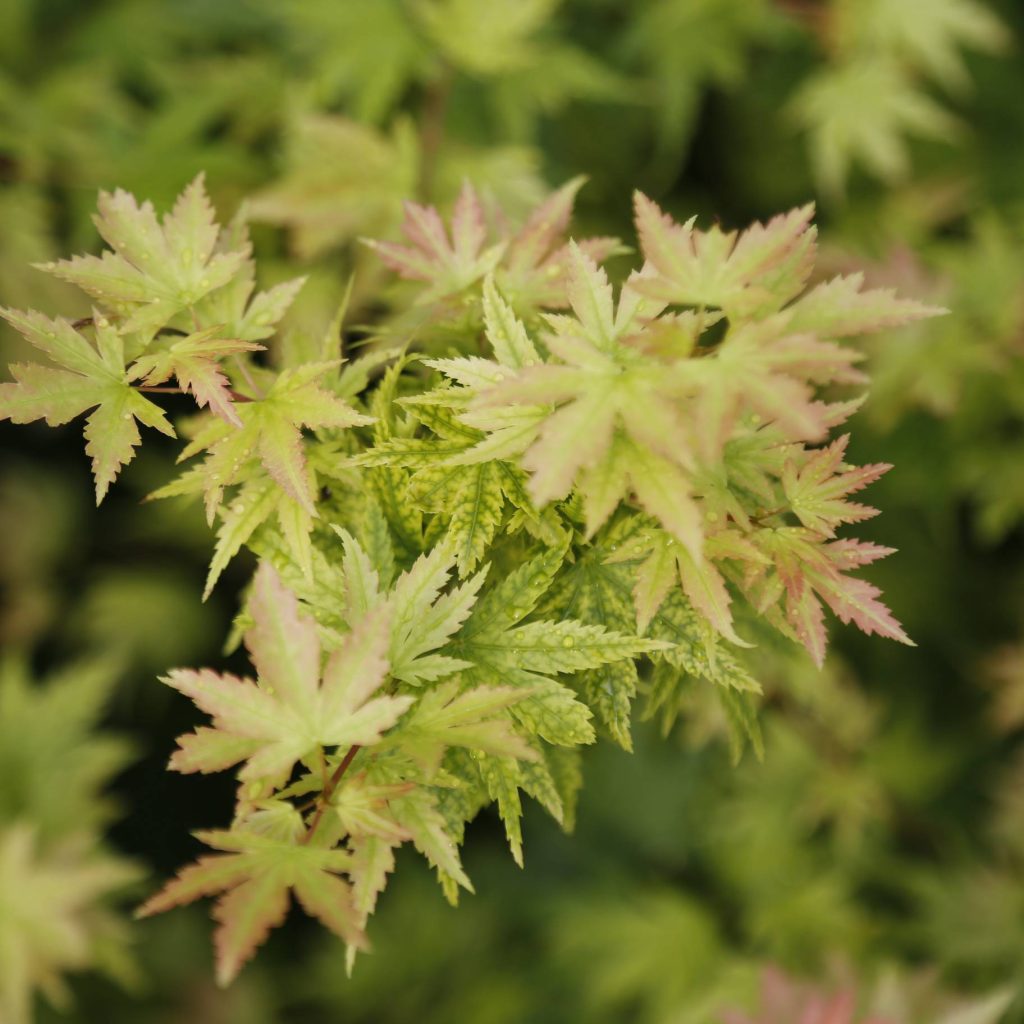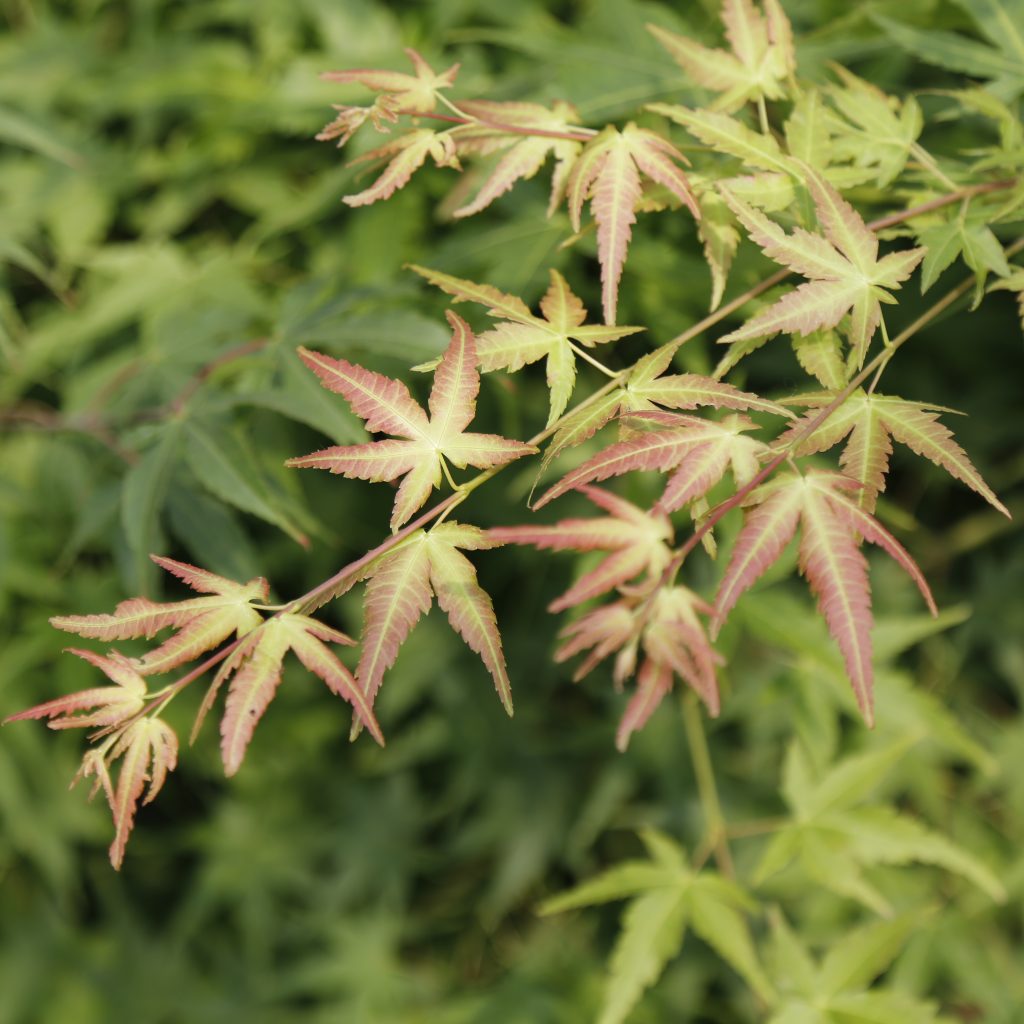Author Introduction:
Write by ANHUI FUYANG JINFENG ECOAGRICULTURE CO.,LTD., where gardening expertise meets premium quality plants and trees! With over 30 years of experience, we’ve cultivated a reputation as specialists in providing top-notch flora for all your gardening needs. What began with a few humble plastic greenhouses has blossomed into a sprawling operation spanning about 300 acres.

As the seasons turn and the air takes on a crisp chill, the world is treated to a spectacle of color unmatched by any other: the vibrant hues of autumn. Among the many trees that contribute to this display, the Chinese maple (Acer truncatum) and the Japanese maple (Acer palmatum) stand out with their fiery reds, warm oranges, and golden yellows. These trees are not only a feast for the eyes but also a testament to the rich cultural heritages of their native lands. In this article, we will explore the differences between these two magnificent species and how they can enhance any garden or landscape.
Origins and Cultural Significance
The Chinese maple, with its majestic stature, has been revered in China for centuries. It is often depicted in traditional Chinese paintings and poetry, symbolizing resilience and steadfastness. The Japanese maple, on the other hand, is celebrated for its delicate beauty and is a staple in Japanese gardens, representing grace and the transient nature of life.
Physical Characteristics
The Chinese maple boasts larger, more robust leaves that can reach up to 6 inches in length, while the Japanese maple’s leaves are smaller and more intricately divided, often resembling the shape of a hand. The Chinese maple’s bark is smooth and gray, providing a stark contrast to the vibrant foliage, whereas the Japanese maple’s bark is more textured and flaky, adding an additional layer of visual interest.
In terms of growth, the Chinese maple typically reaches heights of 20 to 30 feet, with a broad, upright canopy, whereas the Japanese maple is more compact, often spreading or weeping, making it ideal for smaller gardens or as a specimen plant.

Varieties and Cultivars
Both species offer a plethora of varieties and cultivars, each with its own unique characteristics. For the Chinese maple, you’ll find cultivars with leaves ranging from deep green to purple, and in the fall, they can turn to a stunning array of reds and oranges. The Japanese maple, with its countless cultivars, offers an even wider range of leaf shapes and colors, from the deeply cut ‘Bloodgood’ to the lace-like ‘Crimson Queen’.
Growth Requirements and Care
Both the Chinese and Japanese maples prefer well-drained, fertile soil and full sun to partial shade. However, the Japanese maple is generally more adaptable to a variety of conditions, including cooler climates. Regular watering is essential, especially during dry periods, and both species benefit from an annual application of a balanced fertilizer.
Pruning should be done with care, as both species can be sensitive to heavy cuts. For the Chinese maple, pruning is best done in late winter or early spring, while the Japanese maple can be pruned throughout the dormant season to maintain its shape and encourage branching.
Uses in Landscaping and Gardening
The versatility of these trees makes them ideal for a variety of landscaping applications. The Chinese maple, with its height and spread, can serve as a focal point or a backdrop in a larger garden. The Japanese maple, with its more compact size and graceful form, is perfect for smaller gardens, as an accent plant, or even in containers.

Propagation and Cultivation
Both the Chinese and Japanese maples can be propagated through seeds, grafting, or cuttings. Grafting is a common method for the Japanese maple, allowing gardeners to maintain the unique characteristics of a particular cultivar. For both species, a well-prepared soil bed and careful attention to watering and sunlight are key to successful cultivation.
Conclusion
The Chinese and Japanese maples are not only a source of seasonal beauty but also a connection to the rich histories and cultures of their origins. Whether you choose the grandeur of the Chinese maple or the delicate charm of the Japanese maple, you are adding a piece of living art to your landscape. So, as the leaves begin to turn and the air grows cool, consider these trees as a way to bring the magic of autumn into your own garden.
By understanding the unique qualities and requirements of the Chinese and Japanese maples, you can make an informed decision about which tree will best suit your garden and bring you joy throughout the seasons.

